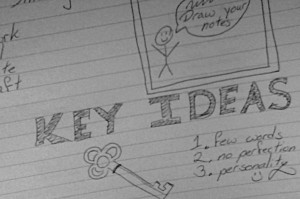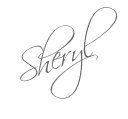 Note taking seems like it should be a simple thing, just write down what you hear. Easy right? Well, not really, it is much more complicated than that. The average student needs to learn how to identify the most important bits of information and record them in the most succinct way possible, while simultaneously paying attention to the instructor who may be delivering the next point that they need to capture.
Note taking seems like it should be a simple thing, just write down what you hear. Easy right? Well, not really, it is much more complicated than that. The average student needs to learn how to identify the most important bits of information and record them in the most succinct way possible, while simultaneously paying attention to the instructor who may be delivering the next point that they need to capture.
We have been digging through this issue as my oldest begins to graduate into more independent learning. For kids who have dyslexia, like she does, the morass of issues goes even deeper. Multi-tasking isn’t easy when listening while writing simultaneously is a challenge, not to mention trying to later interpret those bits of sentences and mis-spelled words back into a cohesive whole.
Do any of these note-taking objections sound familiar?
Pen and paper aren’t my thing! – Solution:
There are a lot of apps/programs/gizmos out there that claim to help dyslexics with note taking without paper and pen, but I’m going to be a spoil-sport and start by telling you that none of them are helpful.
Most of us think that we can listen and type well at the same time, but studies have proven that writing by hand leads to greater retention.
Writing by hand strengthens the learning process. When typing on a keyboard, this process may be impaired. … When writing by hand, our brain receives feedback from our motor actions, together with the sensation of touching a pencil and paper. These kinds of feedback are significantly different from those we receive when touching and typing on a keyboard.
Sure, you will record a lot of information by typing, but you will remember less of it than if you used a pencil, even if your spelling is poor. Strange but true. The friction of the pencil against paper, and the slower pace cause an increase in retention. In the end, isn’t that the point of taking notes, remembering them? Yeah, I thought so too.
There are many pen and paper friendly alternatives though. Keep reading.
Notes just don’t work for me! I’d rather doodle through class. – Solution:
 Visual note-taking is a fantastic way to capitalize on the creativity of many dyslexics. Sketchnotes does a great job of describing the process of blending drawing with note taking. It isn’t for everyone, so if the first page makes you want to scratch your eyes out, just move on. On the other hand, if you look at it and say “Hey, that looks like my/my kid’s notebook” then check out the entire process. It is fantastic for those with a more visual than verbal memory.
Visual note-taking is a fantastic way to capitalize on the creativity of many dyslexics. Sketchnotes does a great job of describing the process of blending drawing with note taking. It isn’t for everyone, so if the first page makes you want to scratch your eyes out, just move on. On the other hand, if you look at it and say “Hey, that looks like my/my kid’s notebook” then check out the entire process. It is fantastic for those with a more visual than verbal memory.
Another doodle friendly option is to make a mind map. Personally, I detest these things. They make my orderly list-loving self cringe, BUT they work fantastically for a friend who is more visual. She uses them for everything under the sun, from medical decisions to her shopping lists. Try it and see which side of the fence you are on.
But I’m an auditory learner! – Solution:
Taking notes with a Livescribe pen takes away the fear of missing something. It can record your lectures and play back at the exact moment when you made that note on your paper with a simple tap of the page. It is a fantastic invention!
The newest internet linked versions have a lot bad reviews because problems with syncing, so my crew selected to test out the older Echo version. We are working with it right now. I hope to have a review up for you soon. *Update: We are still in love with our Echo. Here’s the review.
I can’t learn unless I’m moving! – Solution:
Try modeling clay. (Warning, not all teachers are open to this form of learning at first, but if you explain your methods and demonstrate that you can be discrete and are truly paying attention, most can be won over). Use clay to keep your fingers in motion while recording your lecture – I like to use my iPad and Evernote for recordings so that I can access my information anywhere and on any device.
Don’t just fiddle though, use the power of sensory input to help you learn by crafting what you hear. If you are learning about the anatomy of clams, sculpt your own clam in as much detail as you can. Don’t worry about trying to save a finished product, it is the process that is important. Wad up your creation at the end of class and store it in a ziplock bag until the next class. You will still have the recording to refer back to when studying.
What if everything seems important? – Solution:
Do yourself a favor and plan ahead. Preview any assignments or other material that will be presented. Copy down the chapter titles or any other information that you know will be covered so that you don’t need to struggle with those words in class, but leave a big margin. Even better, divide your paper into columns, I’ll explain why in the next section.
Also, anticipate inevitable spelling issues and think about solutions ahead of time. Writing the word ‘psychology’ 50 times is just plain silly. Shorthand is perfectly acceptable. Create marks or abbreviations for common words that you know you will need to write fast (just plain P for psychology would work), but be consistent or your shorthand will turn into random letters. Also, don’t create anything so complicated that you can’t remember it quickly.
Don’t understand a word? Write it out phonetically as best you can, but underline it. This can cue you to look it up later.
Reading through my misspelled notes is torture! – Solution:
Cornel has explained a fantastic system for reviewing notes that I like to use with my kids (and for myself too). You will be able to look at fewer and fewer words as you study. Remember those columns I mentioned before? Well, they are absolutely key. The first one, as I explained, is for information copied before class, the second is for facts and notes that you learn in class, and the third is used later when studying to clarify information.
This is when you get to break out the colored pencils and get creative. Use color to identify key information so that you don’t need to look at everything at once. Jot down your own thoughts or questions to discuss with the professor/instructor. Add comments and clarifications to make your next reading easier, or draw memory aids for yourself. The process is sometimes referred to as double entry journaling in its most basic form, and many teachers rave about it for studying literature, but from my own experience I can attest that the method works well for all subjects.
Dyslexia can be tricky, but if you utilize your right-brain strengths such as spacial awareness and vivid imagination, note taking doesn’t need to be frustrating. Happy studying!




This is great! Thanks for all the tips. I think they are great ideas for anyone learning to take notes as well as dyslexics and I shared many with my son!! :)
So glad you found them helpful. You are right, they really aren’t just for dyslexics – all of us can benefit from a well thought out doodle now and then.
Thank you for your research and presentation. That modeling clay tip is absolutely wonderful!